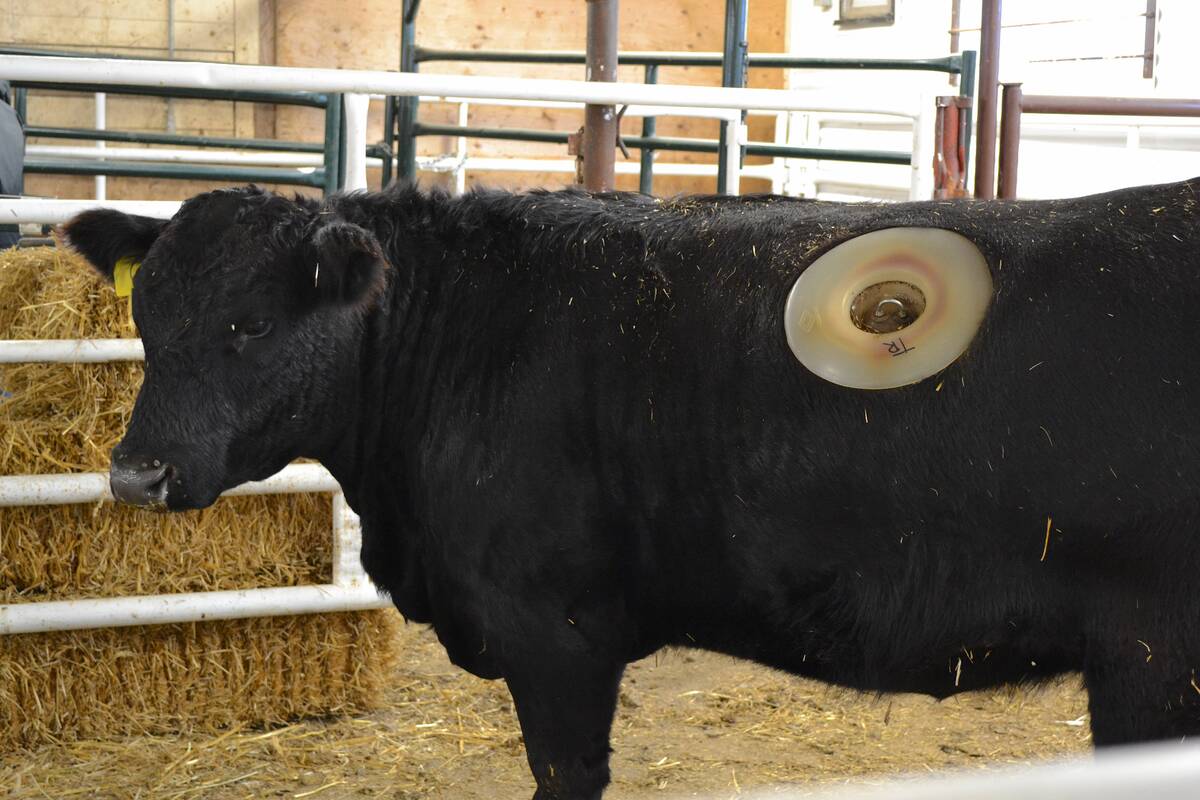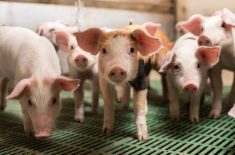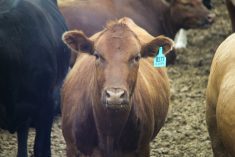Glacier FarmMedia – Canada’s monitoring regimen for bovine tuberculosis is based on tests that are old, time consuming and not overly accurate, researchers say. But there aren’t any better options.
“We don’t have a better test for humans either,” said one researcher, Shu-Hua Wang.
Wang is a professor of medicine at Ohio State University and director of research and implementation science with the Global One Health Initiative. She’s one of several scientists working on better, faster tests for TB in both humans and animals.
Read Also

Lakeland College studying livestock wellness through cannulated heifers
Lakeland College’s Applied Research Team is working with six cannulated heifers on a handful of research projects.
Controlling bovine TB has been a decades-long battle in Canada. This year, a confirmed case from a herd in Saskatchewan put the disease back in the headlines after a shipped heifer tested positive at a U.S. slaughter plant. The animal had left the Saskatchewan farm in fall 2022. The Canadian Food Inspection Agency was notified of confirmation in February.
An investigation found one infected Canadian herd. Thirty-two cases were identified. Contact, trace-in and trace-out herds were still being tested as of Nov. 10, the most recent update.
The procedure
When a bovine TB case is confirmed in Canada, all adult cattle that might have had contact with the sick animal must be tested. According to CFIA’s website, animals receive a blood test and a tuberculin skin test.
The skin test, invented around the turn of the 20th century, involves injecting fluid made from cultured TB bacteria under the animal’s skin. If, after 72 hours, the animal has swelling at the injection site, it has probably been exposed to tuberculosis.
If all animals test negative from both tests, the herd is released from quarantine. If any animal tests positive from either test, it is slaughtered and tissue samples are sent for DNA testing to confirm bovine tuberculosis.
If TB is found in the herd, all animals are “humanely depopulated,” CFIA materials say.
The next step is a CFIA investigation to track possible spread, which can take up to 14 weeks, according to the agency.
In an email exchange with a CFIA spokesperson this summer, Glacier FarmMedia was told that some testing connected with the Saskatchewan TB infections had been delayed to avoid stressing pregnant cows during calving season.
The tuberculin skin test requires handling the animals twice; once to inject, and once a few days later to check the test site.
Testing was delayed again because animals were out on pasture. The CFIA said the risk of transmission to other animals or people was low, reducing urgency.
Because some herds couldn’t be promptly tested, however, they had to remain quarantined for months, leaving ranchers in limbo.
False results
The standard tests are relatively inexpensive and rapid but, because they rely on detecting immune responses rather than bacteria, they can be inaccurate. Test-and-slaughter is currently standard practice due to those murky diagnostics, said Fred Quinn, head of the department of infectious diseases at the University of Georgia’s College of Veterinary Medicine.
They “slaughter them all … rather than try somehow to figure out if they’re actually infectious and transmitting,” he said.
“What would be ideal is if we actually had a test that would identify active disease,” he said later. “That’s what we’re all working on.”
Quinn also works with Wang on TB research.
Human health
Quinn and his colleagues aren’t tackling bovine TB at the behest of the agriculture industry.
At the turn of the 20th century, tuberculosis was the leading cause of death in the United States, as per the American Lung Association. Today, the disease is relatively rare in humans in North America.
Cases still pop up. In 2021, there were 1,829 active human TB cases in Canada, according to federal statistics. Worldwide, 10.6 million people fell ill with TB in 2022 and 1.3 million people died, according to the World Health Organization.
Quinn noted “massive amounts” of bovine TB in parts of South America, Africa and southeast Asia, but little testing.
Many of the human cases could have come from animals through contact or consumption of raw meat and unprocessed milk. It’s unknown how many global TB cases are animal-linked, but one study in Tunisia found that 70 per cent of human cases came from animals, Quinn said.
“One of the main reasons [why milk is pasteurized] is because of tuberculosis,” said Liliana Salvador. She is an assistant professor and infectious disease researcher at the University of Arizona’s School of Animal and Comparative Biomedical Sciences and another colleague of Quinn and Wang.
In a 2017 report, the WHO declared that its strategy to end TB by 2030 “must include zoonotic TB,” adding, “the human burden of disease cannot be reduced without improving standards of food safety and controlling bovine TB in the animal reservoir.”
Bovine TB also comes with another quirk affecting human health: it and the human strain have similar symptoms, but treatment used for human TB won’t work well on the bovine version, Salvador said.
It’s possible that an infected person wouldn’t be asked if they work with cattle or drink unpasteurized milk, Salvador added. If that person lives in a remote area, they may never return to the hospital.
“If, in some places, 70 per cent is bovine TB and it’s misdiagnosed, these people will never get better.”
Better tests?
One potential diagnostic method is derived from a urine test for HIV patients. Wang’s team collected urine from a potentially exposed herd of cattle at a slaughterhouse and found a high correlation between results from that test and the skin and blood tests.
Quinn also pointed to work on a serum-based test that would detect TB antigens only when the TB bacteria are reproducing. However, this can’t be done in the field. Samples must be sent to a lab and the test is expensive.
The team hopes to improve the technology, as both Quinn’s and Wang’s tests could identify active disease.
In 2017, scientists from the Los Alamos National Laboratory in New Mexico said they’d made a breakthrough that could lead to a quick blood test for bovine TB, the CBC reported in April that year.
Researcher Harshini Mukundan, who worked for the laboratory at the time, told Glacier FarmMedia her team had been working on a blood-based diagnostic test for TB in humans. Since bovine and human TB produce similar biomarkers, they thought they might be able to apply the method to the bovine strain.
Early work was promising, Mukundan said, but after they published their report in 2017, little work was done on the project. The team was focused on human disease and didn’t have funding or bandwidth to pursue the bovine angle, she said.
Quinn admitted that funding is an issue and in wealthier countries, there’s little financial incentive to pursue better testing.
“In the U.S., Canada and the U.K. and Western Europe, [it’s] test and slaughter,” he said. “It’s good enough. But in the rest of the world, it’s not, and that’s where we have the problems.”
The threat of zoonotic TB is gaining more attention, and there’s hope that more funding will be given, Salvador said, indicating initiatives that bring together animal and human health sectors.
“I think that we are in a good path but I think it will still take a while.”
– Geralyn Wichers is an associate digital editor for Glacier FarmMedia.
















